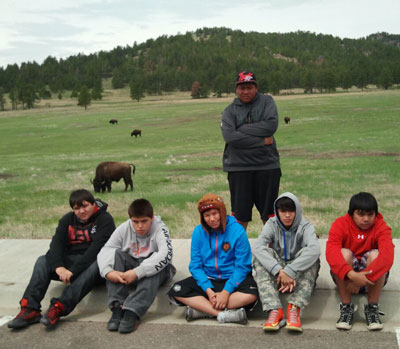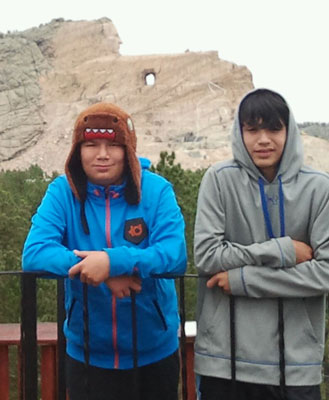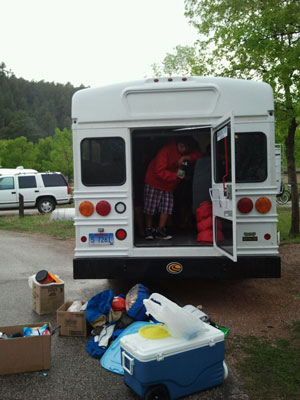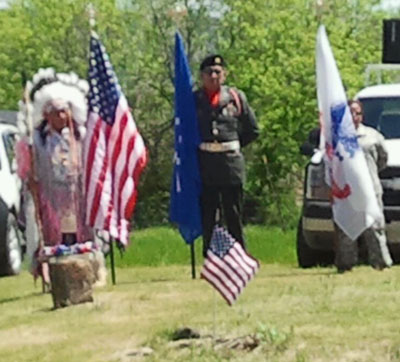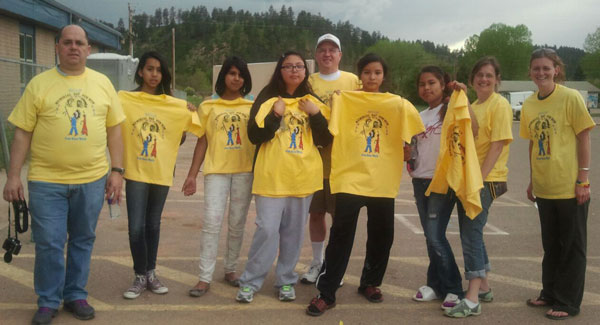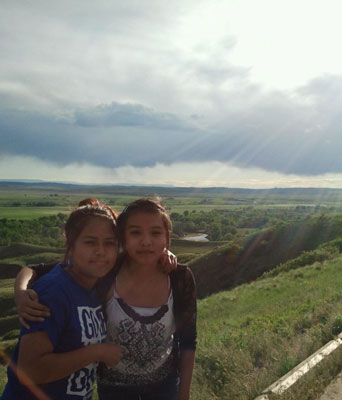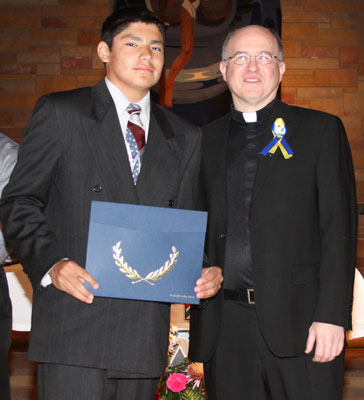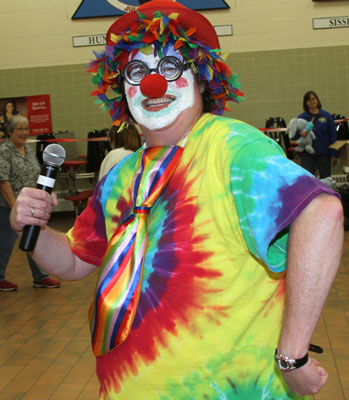After being on the road for most of the past two weeks, I planned to park in my office and answer a slew of letters and emails, and attend to the various projects that are in progress right now. But, the building that houses my office is getting new carpets after perhaps 30 years, and this was the day they decided to install. So I was “homeless” for the day. But it gave me a great excuse to walk around campus and touch base with St. Joseph’s staff and students!
People ask me if I enjoy the pace of summer when school is finished, assuming it is low key and slow. If it’s possible, I think June gets even busier at St. Joseph’s Indian School than the regular school year!
I saw our recent eighth grade graduates leaving for Chamberlain High School to attend the classes that will help them adjust to the teachers and expectations at the new school. Shortly after, the bus doors opened and 53 Lakota children from the Lower Brule Indian Reservation spilled out for their first day of Rising Eagle Day camp.
On the maintenance front:
– Rocks and landscaping are now surrounding the new Medicine Wheel Garden
– The old thrift store has been painted and remodeled into office space
– The Afra and Raphael Homes are gutted as part of our last phase of renovation
– The picnic building where we host our powwow supper is getting a new roof to replace hail damage
– Central offices is getting new carpet and tuckpointing to preserve the aging brick exterior
– Surveyors have flagged the north side areas of campus for the next phase of our drainage improvement plan
– Curb and gutters have been poured to expand the museum parking lot
Several of our Native American high school students are working summer jobs here, either at summer camp, giving museum tours, or helping with maintenance. Erika is a camp counselor, and will start college in the fall. She is trying to be very frugal and save as much as she can.
She is anxious because her family has almost no income, and she knows that she will have to sacrifice and get by on scholarships and part time jobs. While I encouraged her, I was also inspired by her trust and daring in pursuing her dream.


